In the second of our latest posts using data from our SME surveys, we look at how and why firms borrow.
Some firms will simply not use credit at all, and we find that on a segmented basis, there are significant variations. For example, almost all Cash-Strapped Sole Traders will be seeking credit, whilst only 30% of Career Switching Start-Ups will borrow. Most banks do not segment their business effectively, so do not understand these important differences. There are also very different credit risk and default profiles.
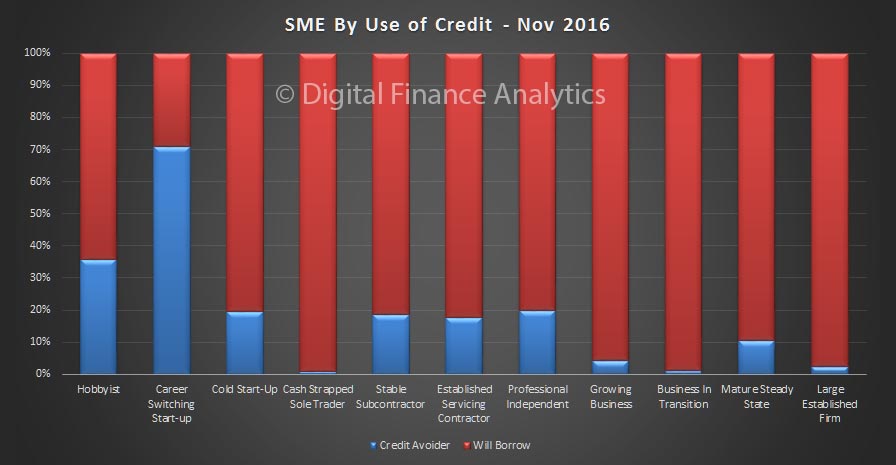 For those who will borrow, there are many reasons why they need funds. However, the number one need is for working capital.
For those who will borrow, there are many reasons why they need funds. However, the number one need is for working capital.
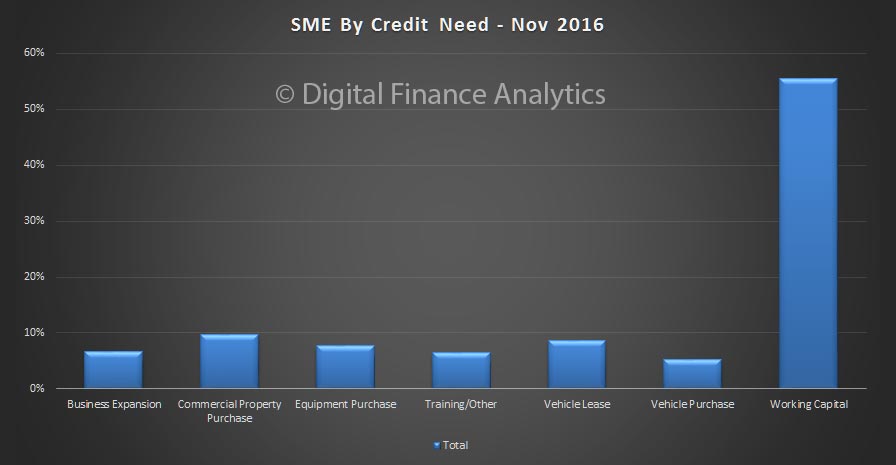 Within working capital the main reason is delayed payments (43%).
Within working capital the main reason is delayed payments (43%).
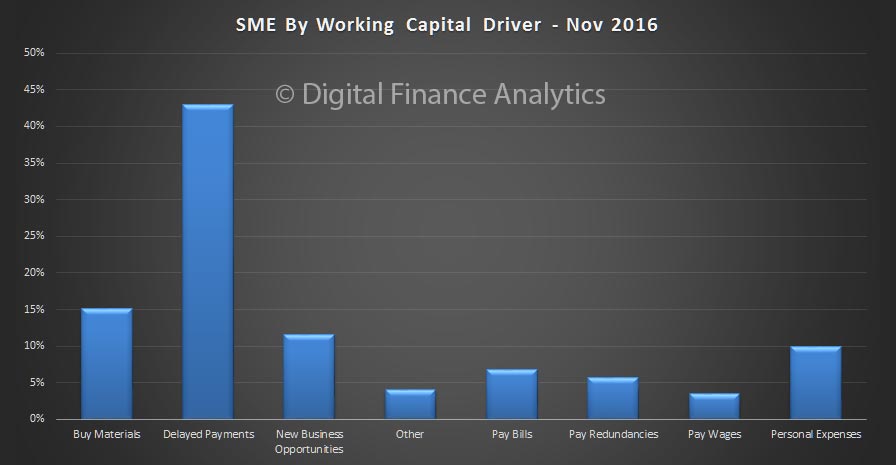 This is because the average number of debtor days continues to blow out. More than 50% of payments are now being settled beyond 50 days. Large firms and government departments are the worse payers.
This is because the average number of debtor days continues to blow out. More than 50% of payments are now being settled beyond 50 days. Large firms and government departments are the worse payers.
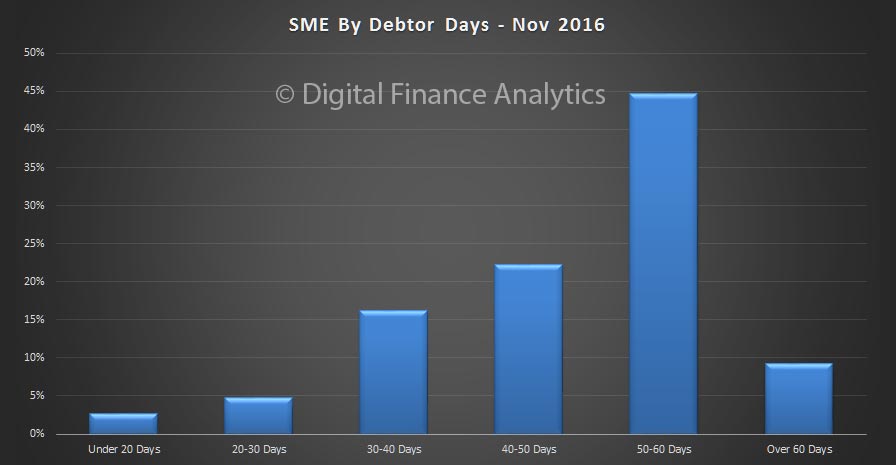 Firms in WA and TAS have the longest wait times for payment.
Firms in WA and TAS have the longest wait times for payment.
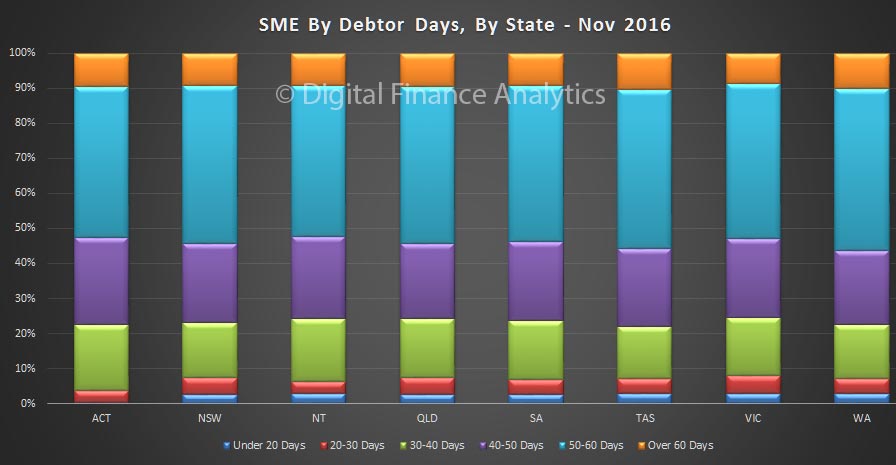 There are also some variations between industries.
There are also some variations between industries.
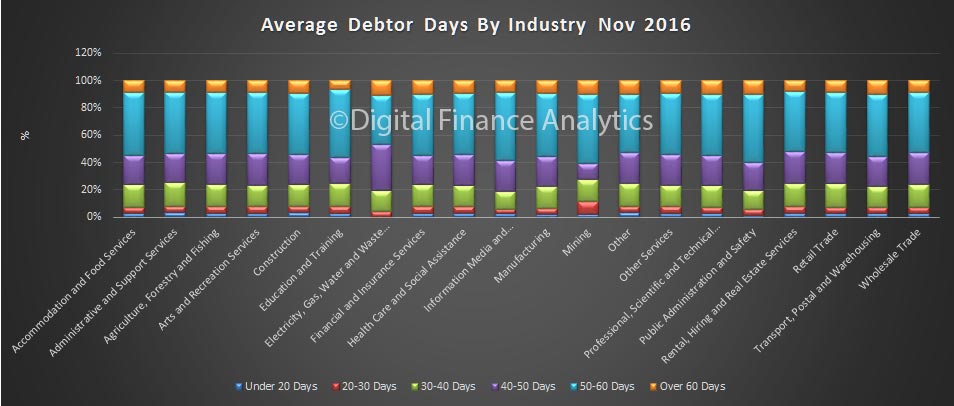 Finally, we see that the average loan and card balance varies wildly across the segments. Note this chart shows the value on a log scale.
Finally, we see that the average loan and card balance varies wildly across the segments. Note this chart shows the value on a log scale.
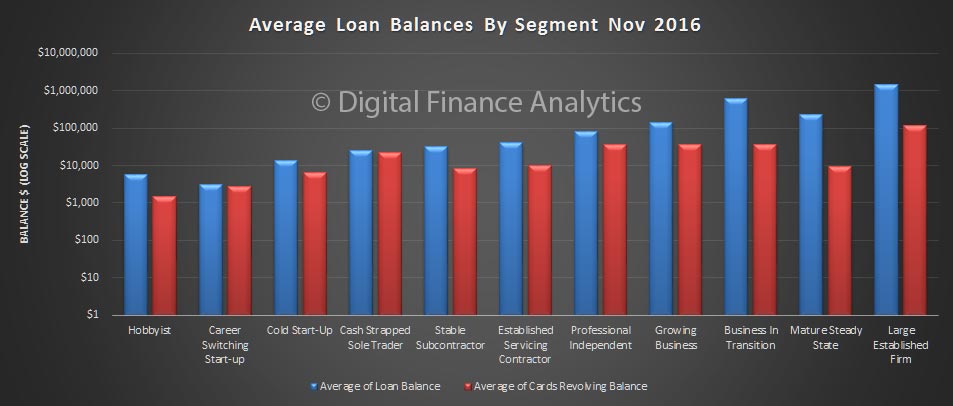 We do not think the underwriting standards in many of the banks take sufficient account of the variations between firms. As a result, many are not able to gain the funds they need, whilst others are regarded as more risky than they really are. Time for better segmentation.
We do not think the underwriting standards in many of the banks take sufficient account of the variations between firms. As a result, many are not able to gain the funds they need, whilst others are regarded as more risky than they really are. Time for better segmentation.
Next time we look at how firms are using technology, and how they view Fintech alternatives.

2 thoughts on “SME’s Are In A Cash Flow Squeeze”